I am having trouble calculating the power consumption of this optocoupler (4n25). In the datasheet the input power dissipation stated as \$ P_{diss} = 100mW \$ and forward current of \$I_F = 60mA\$. In the figure below are two setups with different resistor values.
changing the resistor value of R3 results in:
\$R3 = 100\Omega\$: \$U_{in} = 1.24V, I_{in}=37.22mA \$ => \$ P_{R3} \approx 47mW\$
\$R3 = 10k\Omega\$: \$U_{in} = 1.01V, I_{in}=0.398uA \$ => \$ P_{R3} \approx 0.402\mu W\$
Looking at Fig3 and inserting the \$U_{in}@25°C\$ results in
\$R3 = 100\Omega\$: \$I_F\approx 50mA \rightarrow P_{opto} = 62mW\$
\$R3 = 10k\Omega\$: \$I_F\approx 1mA \rightarrow P_{opto} = 1.01mW\$
(The graph only goes to 1.2V but for my thought experiment I extrapolated the values).
The consumed power of the input circuit would be $$ P_{tot} = P_{R3} + P_{opto}$$
Is this approach correct? If this is the case it would be potentially dangerous to remove the resistor. Also: Is it best practice to choose a the highest resistor which still guarantees that the opto functions as intended?
EDIT: This post is based on this question
